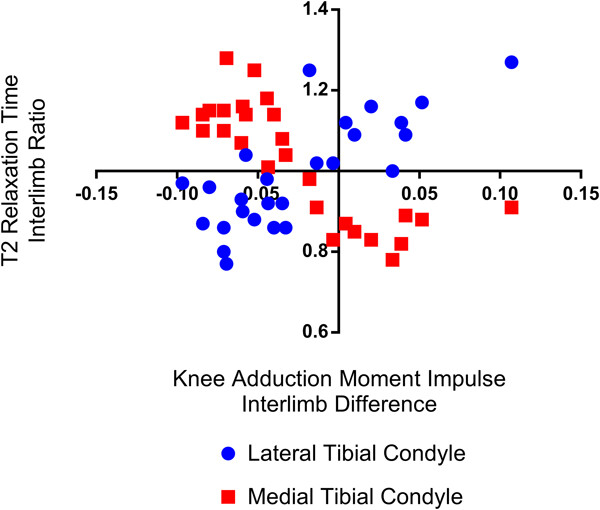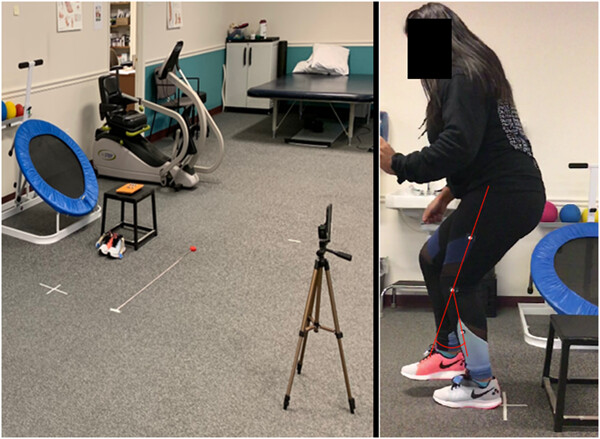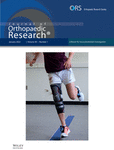Journal list menu
Export Citations
Download PDFs
ISSUE INFORMATION
Issue Information - Editorial Board and TOC
- Pages: 1-5
- First Published: 04 January 2022
EDITORIAL
SPECIAL ISSUE REVIEWS
Biologic agents to optimize outcomes following ACL repair and reconstruction: A systematic review of clinical evidence
- Pages: 10-28
- First Published: 15 February 2021
SPECIAL ISSUE RESEARCH ARTICLE
Optimizing anterior cruciate ligament reconstruction: Individualizing the decision-making process using data from the Kaiser Permanente ACLR Registry: 2018 OREF award paper
- Pages: 29-42
- First Published: 10 March 2021
SPECIAL ISSUE REVIEWS
ACL injury prevention: Where have we come from and where are we going?
- Pages: 43-54
- First Published: 29 April 2021
Can we afford to ignore the biology of joint healing and graft incorporation after ACL reconstruction?
- Pages: 55-64
- First Published: 27 July 2021
SPECIAL ISSUE RESEARCH ARTICLES
Articular cartilage thickness changes differ between males and females 4 years following anterior cruciate ligament reconstruction
- Pages: 65-73
- First Published: 20 July 2021
Relationship between altered knee kinematics and subchondral bone remodeling in a clinically translational model of ACL injury
- Pages: 74-86
- First Published: 09 December 2020
RESEARCH ARTICLE
Tibiofemoral bony morphology features associated with ACL injury and sex utilizing three-dimensional statistical shape modeling
- Pages: 87-94
- First Published: 15 December 2020
SPECIAL ISSUE RESEARCH ARTICLES
Visual cognition associated with knee proprioception, time to stability, and sensory integration neural activity after ACL reconstruction
- Pages: 95-104
- First Published: 23 February 2021
An obstacle clearance test for evaluating sensorimotor control after anterior cruciate ligament injury: A kinematic analysis
- Pages: 105-116
- First Published: 02 March 2021
Meeting movement quantity or quality return to sport criteria is associated with reduced second ACL injury rate
- Pages: 117-128
- First Published: 02 March 2021
Vertical ground reaction force 2 years after anterior cruciate ligament reconstruction predicts 10-year patient-reported outcomes
- Pages: 129-137
- First Published: 13 March 2021
Knee joint unloading and daily physical activity associate with cartilage T2 relaxation times 1 month after ACL injury
- Pages: 138-149
- First Published: 29 March 2021

Altered knee adduction moment (KAM) impulse, less knee flexion excursion, and higher daily step counts accounted for up to 65.8% of T2 relaxation time variation in the tibiofemoral cartilage 1 month after anterior cruciate ligament (ACL) injury. Lower KAM impulse associated with longer T2 relaxation times in the injured medial compartment, which may indicate poorer cartilage health. The opposite relationship was present in the lateral compartment. Gait biomechanics and physical activity are modifiable targets that may improve cartilage health acutely after ACL injury.
Landing biomechanics deficits in anterior cruciate ligament reconstruction patients can be assessed in a non-laboratory setting
- Pages: 150-158
- First Published: 19 March 2021

This study used wireless force sensing insoles and automated two-dimensional video analysis to measure continuous kinetic and kinematic landing mechanics in a non-research setting with anterior cruciate ligament reconstruction (ACLR) patients and uninjured controls. Compared to the control group, ACLR patients had reduced plantar force impulse symmetry during bilateral landing and reduced knee flexion range of motion symmetry during unilateral landing. This is an important step towards assessing injury risk in a clinical setting for return to sport decision making.
Patellofemoral and tibiofemoral joint loading during a single-leg forward hop following ACL reconstruction
- Pages: 159-169
- First Published: 19 April 2021
Balance, reframe, and overcome: The attitudes, priorities, and perceptions of exercise-based activities in youth 12–24 months after a sport-related ACL injury
- Pages: 170-181
- First Published: 05 May 2021
Confidence, ability to meet return to sport criteria, and second ACL injury risk associations after ACL-reconstruction
- Pages: 182-190
- First Published: 30 April 2021
Advanced training enhances readiness to return to sport after anterior cruciate ligament reconstruction
- Pages: 191-199
- First Published: 01 May 2021
Limb preference impacts single-leg forward hop limb symmetry index values following ACL reconstruction
- Pages: 200-207
- First Published: 02 May 2021
Passing return-to-sport criteria and landing biomechanics in young athletes following anterior cruciate ligament reconstruction
- Pages: 208-218
- First Published: 03 June 2021
Gait asymmetries are exacerbated at faster walking speeds in individuals with acute anterior cruciate ligament reconstruction
- Pages: 219-230
- First Published: 08 June 2021
Psychosocial factors 3-months after anterior cruciate ligament reconstruction predict 6-month subjective and objective knee outcomes
- Pages: 231-238
- First Published: 22 June 2021
Symmetry and sex differences in knee kinematics and ACL elongation in healthy collegiate athletes during high-impact activities revealed through dynamic biplane radiography
- Pages: 239-251
- First Published: 13 August 2021
Knee cartilage T2 relaxation times 3 months after ACL reconstruction are associated with knee gait variables linked to knee osteoarthritis
- Pages: 252-259
- First Published: 30 March 2021
Infrapatellar fat pad volume and Hoffa-synovitis after ACL reconstruction: Association with early osteoarthritis features and pain over 5 years
- Pages: 260-267
- First Published: 17 January 2021
Quadriceps muscle volume positively contributes to ACL volume
- Pages: 268-276
- First Published: 28 January 2021
RESEARCH ARTICLE
A transfer learning approach for automatic segmentation of the surgically treated anterior cruciate ligament
- Pages: 277-284
- First Published: 17 January 2021
SPECIAL ISSUE RESEARCH ARTICLES
Return-to-sport quadriceps strength symmetry impacts 5-year cartilage integrity after anterior cruciate ligament reconstruction: A preliminary analysis
- Pages: 285-294
- First Published: 08 April 2021






